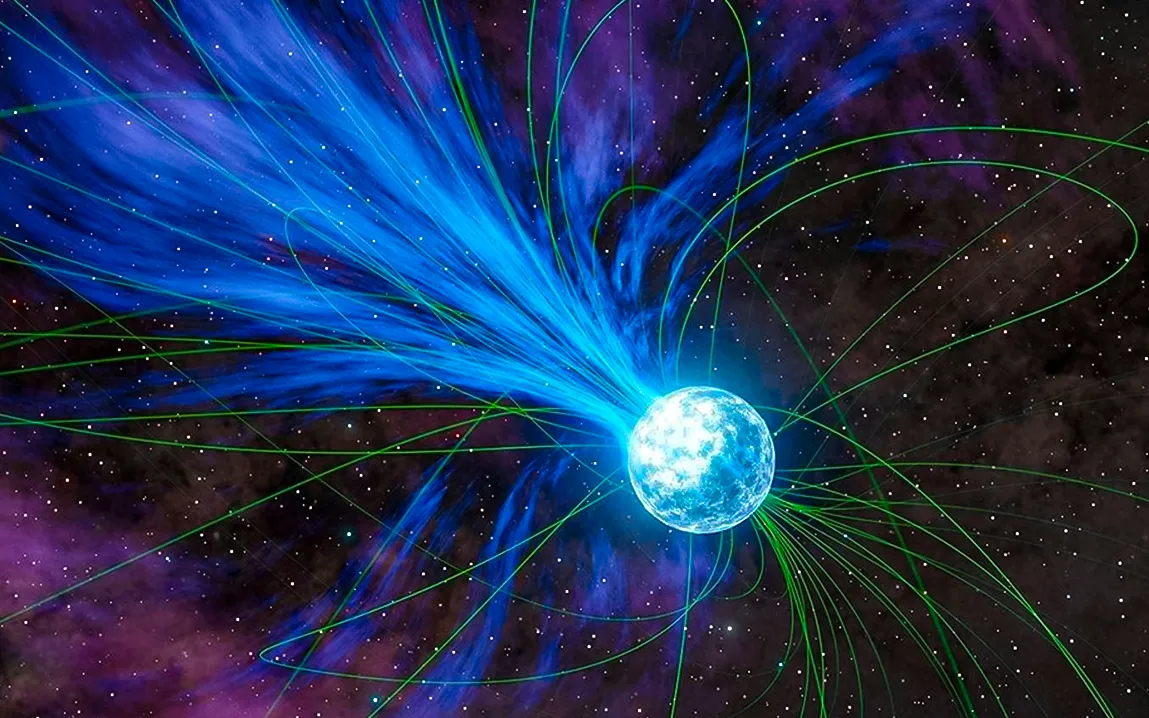Life on Earth couldn’t exist without heavy metals. These elements are vital from the iron in our blood to the gold in our electronics. But where did they come from?
A new study published in The Astrophysical Journal Letters finds that some of the universe’s heavy elements, such as gold, platinum, and uranium, possibly came from one of the cosmos’ most brutal events: gigantic flares in a special sort of star called a magnetar.
“Everything’s made of basic building blocks — neutrons, protons, electrons,” said Anirudh Patel, lead author and Columbia University doctoral student. “But how does nature forge those into complex matter like gold or uranium? That’s the mystery we’re solving.”
Heavy Metals Need Extreme Conditions
To create heavy metals, you need a place dense enough for neutrons and protons to collide and bond, ideally with more neutrons than protons. That makes neutron stars the perfect factory: ultra-dense remnants of supernovae, just 12 miles across but more massive than our Sun.
In 2017, scientists witnessed two neutron stars merge, spewing out gold several times Earth’s mass. It was proof that these collisions could make heavy metals. But mergers are rare, once every 100,000 years, and occur too late in the universe’s timeline to explain metals in the earliest stars. There had to be another source.
A Star That Breaks Physics
Magnetars are neutron stars on steroids. They have the strongest known magnetic fields in the universe. When one erupts, the energy is so vast it can reach Earth from across the galaxy.
In 2004, scientists recorded the most powerful magnetar giant flare ever seen. Though 30,000 light-years away, the burst still rattled Earth’s ionosphere. “That flare was probably the brightest electromagnetic event ever detected outside our solar system,” said Columbia astrophysicist Brian Metzger.
The team studied that flare, suspecting it could have forged heavy elements. When a magnetar flares, it doesn’t just emit light, it blasts out matter. As that matter cools, protons and neutrons recombine into heavier and heavier elements via a process called rapid-neutron capture.
Creating Gold from a Cosmic Blast
Patel and his team ran simulations to predict how much gold and other metals could form during such an explosion, and then matched those with gamma-ray data from the 2004 flare.
The results were staggering: the flare produced a mass of heavy metals greater than Mars. And this wasn’t just theoretical, it was backed by real, observed gamma-ray emissions from the decaying radioactive metals.
“This is a very exciting development,” said Hsin-Yu Chen, an astrophysicist at the University of Texas, who wasn’t part of the study. “It’s new observational evidence for how heavy elements form.”
Solving a Long-Standing Cosmic Puzzle
Astrophysicists have long believed there must be more than one path to creating heavy elements. “But until now, we didn’t have solid proof,” said MIT’s Anna Frebel. The findings help explain how some of the universe’s first stars already had metals like gold, well before neutron star mergers became common.
Patel estimates that magnetar flares could account for 1 to 10 percent of all elements heavier than iron in the galaxy. The rest still likely comes from neutron star mergers and perhaps other sources scientists haven’t yet found.
The Future of Cosmic Gold Hunting
The discovery is more than academic. “That gold in your wedding ring may have come from an exploding magnetar — long before the Sun was born,” said Frebel.
To dig deeper, Patel says the upcoming launch of NASA’s Compton Spectrometer and Imager (COSI) in 2027 could be pivotal. The space telescope will track gamma-ray emissions from space in stunning detail, helping scientists pinpoint exactly where and how these metals form.
“We’re still building the full picture,” Patel said. “But this brings us one step closer to understanding where the elements that built our world — and ourselves — truly came from.”



